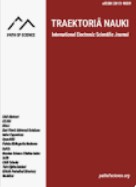Principal Contributions of Semiotic-Structural Approach in Culturology
Principal Contributions of Semiotic-Structural Approach in Culturology
Author(s): Khaladdin SofiyevSubject(s): Semiotics / Semiology, Semiology, Islam studies, Structuralism and Post-Structuralism, Philosophy of Language
Published by: Altezoro, s. r. o. & Dialog
Keywords: semiotics; structuralism; signs; code; text; Muslim culture; metalanguage of semiotics;
Summary/Abstract: Pierce brought to research one of the main concepts of semiotics, the "sign", and Saussure brought to study the language system ("langue"), and thus they created a new view about culture. Semiotics was formed from the Greek word "semeion", a sign. Pierce's iconic signs were included in semiotics as names of depicted facts. So, a severe interest in semiotics was impulsed by the shaking (mini earthquake) of the "sign" concept. Two epistemological shakes or microearthquakes happened in the second half of the XIX century. One of them was connected with the notion of a "sign" (Pierce), and the other was connected to the idea of a "language". But much more lately, it was clear that two concepts were formed due to that earthquake, and they could become the basics of a new metalanguage. In the 20th century, "srtructuralism" began to be used. This term was brought to linguistics by Roman Yakobson. Zellig Harris assigned this term from Yakobson and named his book "Methods in Structural Linguistics". Everyone knew about the form and content of cultural and art events in the past. But when there was formed metalanguage of semiotics, connected with culture, a structure and content were identified with pointing and pointed components of the sign. So, semiotics realized the formulation of thinking to combine and separate something because it connected cultural facts with such notions as a sign, a structure and a text and, as a result, separated them from something. For example, it separated from non-cultural facts that weren't comprehended as a sign or text. It gave the metalanguage a new paraphrasing model based on semiotics. In the past culturological narrations were formed based on ideological admirations, statements or negative sayings, i.e. they were created from discourses of appraisal character. The period of confrontations and struggles made such discourses very popular. But in history, there were also such periods that speeches like "how well" and "how bad" exhausted themselves. There appeared a need for discourses like "how it is constructed". Exactly semiotics of culture became popular because they met this requirement.
Journal: Traektoriâ Nauki
- Issue Year: 8/2022
- Issue No: 04
- Page Range: 4001-4006
- Page Count: 6
- Language: English

